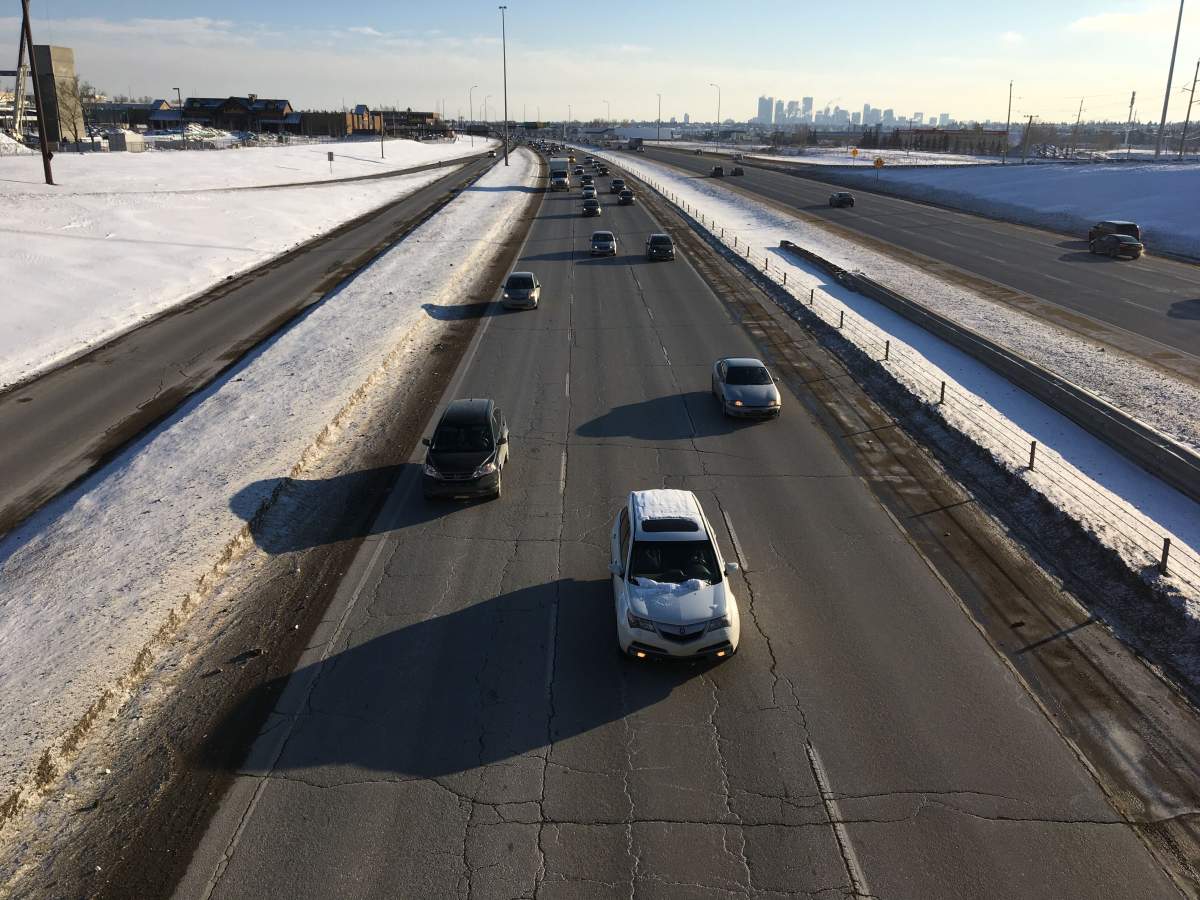Alberta Transportation is looking for a company to help solve the traffic backlog that faces many Calgary commuters on Deerfoot Trail each day, and one option could be lowering the speed limits in some areas.

In a request for proposals issued on Feb. 14, the province said it’s looking for proposals for various short-term upgrades the multi-lane, provincially owned highway that stretches north to south across the city. Options include widening the throughway, installing message boards and varying the speed limits at various times.
“Deerfoot Trail is beyond capacity,” said Jerry Lau, infrastructure manager with Alberta Transportation. “There’s a lot more vehicles trying to use Deerfoot Trail than there are enough lanes for.”
In short, the province is looking at widening the highway — which would involve the addition of either a general purpose or high-occupancy vehicle lane in each direction — along with the implementation of so-called “intelligent traffic systems.”
One of those would be varied overhead signs that could advise drivers of heavy traffic, a collision, adverse weather or poor visibility ahead. Another option being considered is varied speed limits, much like what can be seen on some B.C. highways.
According to Lau, speed variation on the highway would happen at peak rush hour times and would involve reducing speeds in certain areas with the aim of slowing traffic down as vehicles are approaching a bottleneck situation.

Get daily National news
“Instead of stop-and-go traffic, it would be slowing down and go, and that way it would smooth out the traffic flow on Deerfoot Trail and hopefully could improve the peak hour commute for travellers,” Lau said.
WATCH (Aired May 2017): City of Calgary and Alberta Transportation recommend improvements on Deerfoot Trail

Lau said determining the amount speeds would be reduced will require a trial-and-error period but added that they could be reduced to 60 to 70 kilometres an hour on those approaches.
The province also highlighted a number of spots along the highway within Calgary that are in need of upgrades, including the need for a northbound connection from 11 Street N.E. and the addition of an auxiliary lane between McKnight Boulevard and 64 Avenue.
It’s also identified traffic issues that need addressing along the southbound stretch between Southland and Anderson/Bow Bottom, where traffic tends to back up during peak times.
It’s hoped those upgrades would reduce the amount of weaving along the busy highway.
Lau said one worry with the improvements is that increasing the capacity could lead to more drivers taking to the road, further congesting the highway.
“There’s a balance between how much do you want to spend improving Deerfoot Trail and try to alleviate congestion, but on the other hand, you’re attracting more traffic to Deerfoot Trail so it’s kind of like a dog chasing its tail,” he said.
A study on Deerfoot Trail traffic is due back at the end of this year, at which point Lau said the department is hoping to have an engineering firm with a plan in place to start work. It’s hoped that implementation will happen around 2021 or 2022.
He said the province is also looking at implementing some of the same measures along the QEII Highway between Calgary and Edmonton.
Any potential changes to Deerfoot Trail in Calgary would be legally enforceable, Lau said.






Comments